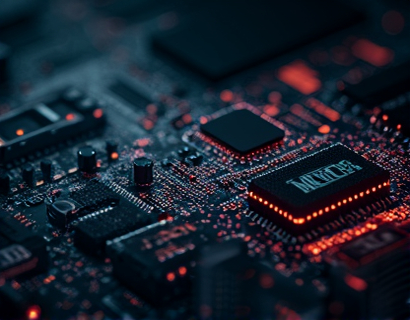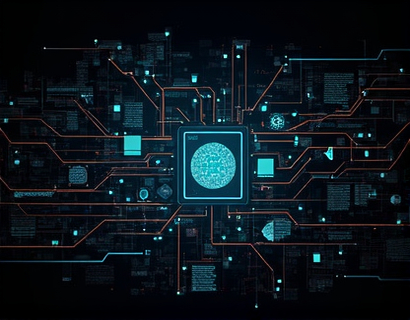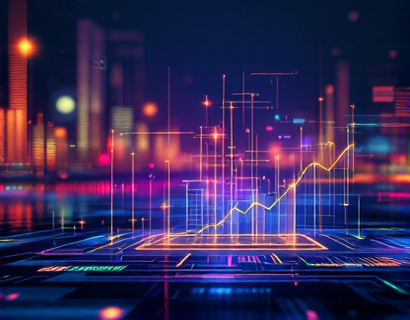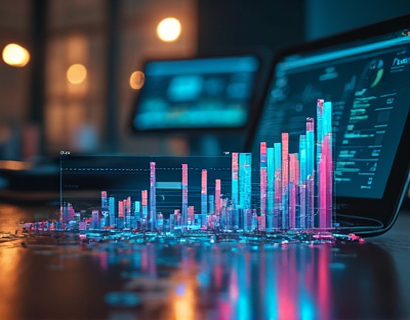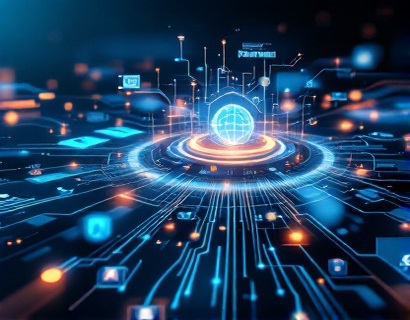Next-Gen Smart Contract AMMs: Revolutionizing DeFi Trading with Advanced Automation
In the rapidly evolving world of decentralized finance, or DeFi, the integration of smart contracts has been pivotal in reshaping traditional trading paradigms. Among the most transformative developments is the advent of next-generation Automated Market Makers (AMMs) powered by advanced smart contract automation. These innovative platforms are redefining liquidity management and trading strategies, offering crypto traders and DeFi enthusiasts unparalleled efficiency and optimization in their market interactions.
The core functionality of AMMs has always revolved around providing a decentralized alternative to traditional order books. By utilizing liquidity pools and mathematical formulas, AMMs facilitate trades without the need for a centralized entity to match buy and sell orders. However, the next generation of AMMs takes this concept further by incorporating sophisticated automation and machine learning algorithms. This advancement not only streamlines liquidity provision but also enhances the overall trading experience through predictive analytics and automated strategy execution.
Enhanced Liquidity Management
One of the primary benefits of next-gen smart contract AMMs is their superior liquidity management capabilities. Traditional AMMs rely on fixed formulas to determine asset prices, which can lead to inefficiencies and liquidity traps. In contrast, advanced AMMs employ dynamic pricing models that adapt in real-time to market conditions. This adaptability ensures that liquidity pools remain attractive to providers and traders alike, even during volatile market periods.
Moreover, these platforms often introduce innovative incentives for liquidity providers. By leveraging smart contracts, AMMs can automatically adjust reward rates based on market demand and liquidity levels. This dynamic approach encourages more participants to contribute to liquidity pools, thereby enhancing the overall depth and liquidity of the market. For instance, during periods of high volatility, the system can increase liquidity rewards to attract more providers, ensuring that the market remains fluid and responsive.
Automated Trading Strategies
The integration of advanced automation in next-gen AMMs is a game-changer for traders. Traditional AMMs require manual intervention to execute complex trading strategies, which can be time-consuming and prone to human error. With automated trading, these platforms can execute trades based on predefined criteria, such as price thresholds, moving averages, and other technical indicators. This automation not only saves time but also reduces the risk of emotional decision-making during market fluctuations.
Smart contract-based automated trading systems can be programmed to operate 24/7, executing trades at optimal times without the need for human oversight. For example, a trader can set up a strategy to automatically buy an asset when its price drops below a certain level and sell it when it rises above another threshold. These strategies can be fine-tuned and adjusted in real-time, allowing for a more agile and responsive trading approach.
Predictive Analytics and Market Insights
Another significant advantage of next-gen AMMs is their ability to leverage predictive analytics and provide valuable market insights. By analyzing historical data and current market trends, these platforms can forecast price movements and identify potential trading opportunities. This predictive capability is achieved through the use of machine learning algorithms that continuously learn and adapt to new data inputs.
Traders can benefit from these insights by gaining a deeper understanding of market dynamics. For instance, an AMM might highlight a particular asset that is likely to experience a price surge based on upcoming events or trends. This information can help traders make more informed decisions, optimizing their entry and exit points to maximize profits. Additionally, these insights can be used to develop more sophisticated trading strategies, such as arbitrage opportunities or hedging positions.
Interoperability and Cross-Chain Capabilities
The next generation of smart contract AMMs is also focusing on enhancing interoperability and cross-chain capabilities. In a decentralized ecosystem, the ability to seamlessly interact with different blockchains and protocols is crucial. Advanced AMMs are being designed to support multiple blockchain networks, allowing traders to access a broader range of assets and liquidity sources. This interoperability not only increases the liquidity available on the platform but also provides traders with more flexibility and options.
Cross-chain AMMs can facilitate trades between different cryptocurrencies and tokens, even if they reside on separate blockchains. This is achieved through the use of atomic swaps and other cross-chain protocols, ensuring that transactions are secure and efficient. For example, a trader can swap Ethereum-based tokens for Binance Smart Chain assets without the need for intermediaries, reducing transaction costs and increasing speed.
Enhanced Security Measures
Security remains a paramount concern in the DeFi space, and next-gen AMMs are addressing this by implementing advanced security protocols. Smart contracts are inherently vulnerable to bugs and exploits, but the latest generation of AMMs employs rigorous testing and auditing processes to minimize risks. Formal verification techniques and automated security scans are now standard practices to ensure that smart contracts function as intended and are free from vulnerabilities.
Additionally, these platforms often incorporate multi-signature wallets and decentralized governance models to enhance security and transparency. Users have more control over their funds, and decisions regarding protocol upgrades and changes are made through community voting, reducing the risk of centralized manipulation.
User-Friendly Interfaces and Onboarding
Despite their complexity, next-gen AMMs are designed to be user-friendly, making them accessible to both seasoned traders and newcomers to the DeFi space. Intuitive user interfaces and comprehensive onboarding processes guide users through the setup and usage of the platform. Step-by-step tutorials and interactive guides help users understand the underlying mechanics and optimize their trading strategies.
Moreover, these platforms often integrate with popular wallet solutions and DeFi protocols, simplifying the process of connecting to liquidity pools and executing trades. The goal is to create a seamless experience that minimizes friction and maximizes user satisfaction.
Future Prospects and Challenges
As next-gen smart contract AMMs continue to evolve, they hold the potential to further transform the DeFi landscape. One of the key areas of development is the integration of more advanced AI and machine learning algorithms, which can provide even more accurate predictions and personalized trading recommendations. The combination of decentralized finance and artificial intelligence is poised to create highly efficient and adaptive trading ecosystems.
However, the path forward is not without challenges. Regulatory scrutiny, scalability issues, and the need for broader adoption are among the hurdles that these platforms must overcome. Ensuring compliance with evolving regulations while maintaining the decentralized ethos of DeFi will be crucial for long-term success. Additionally, improving the scalability of smart contracts to handle higher transaction volumes without compromising performance is an ongoing area of research and development.
Despite these challenges, the potential benefits of next-gen AMMs are undeniable. By offering enhanced liquidity management, advanced automation, predictive analytics, and seamless interoperability, these platforms are set to redefine the future of decentralized trading. For crypto traders and DeFi enthusiasts, embracing these innovations can lead to more efficient, profitable, and secure trading experiences in the dynamic crypto landscape.






